A version of this Post was published at Andhra Cultural Portal on August 12, 2015
As many of you know, we wrote a series on one of the key impediments to safeguarding the future of the Telugu Language, Andhra Culture, and Indic Civilization. Despite the much vaunted Indian Intelligence (which received a fillip from the selection of a certain new tech CEO), we recognise that this was balanced by a quality known as Indian Stupidity. As such we completed a 5 part series that concluded with Culture: The Cure for Stupidity.
Having not only identified the ailment, but established the appropriate medicine, the question that now remains before us is: “how to ensure healing and recovery?”. If Bharatavarsha has been on the cultural defensive for the better part of a millennium, how then is this highly accomplished and ancient civilization to revive itself? In short, What is Needed for a Civilizational Revival?
Contrary to many of our over-memorising, but under-thinking commentators, it is not a matter of simply dusting off a few palm leaf manuscripts and tamra patras to revive our sanskriti and recreate the Satya Yuga. A society, a culture, and indeed, a Civilization, is more than just a collection of texts that has to be implemented when an elite again has agency. What’s more, alleged leadership that spends day in day out reviling its masses and imposing a uni-dimensional vision of its ideal-state has no business, let alone legitimacy, to stake claim to authority. The purpose of leadership, political or spiritual, is to recognise the tremendous responsibilities that come with tremendous privilege. It is not a question of ruling jatis and service jatis. By any schema, all are service jatis only, as every varna is mandated to serve Dharma, not itself. That is the path to a spiritual and cultural revival.
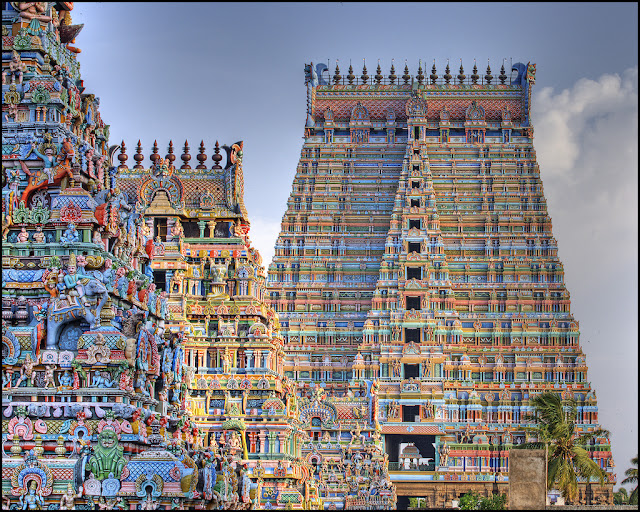
To catalyse a cultural revival, we cannot merely replicate the past, but must use it to inspire us to build a new future.
While the fundamental motives, the governing ideas which constitute the essential spirit of our culture are a part of our very being, they should receive changing expression according to the needs and conditions of our time.-Sarvepalli Radhakrishnan[1, 9-10]

To catalyse a cultural revival, more than mere saastric vidya will be necessary to defend Dharma in the days ahead. Like it or not, mind-boggling material advances have been made, primarily in Western institutions (quietly drawing from the East), that have overwhelmingly increased the sophistication and stakes of man’s material knowledge and power. Entire new fields such as nano-robotics, game theory, information technology, and marketing have come into their own and matured beyond prior mortal conception (at least in this Chaturyuga). Not only learning our own itihaasa, but in depth global history, will become crucial, even disqualifying if found lacking, for any putative cultural leader.
To catalyse a cultural revival, cosmopolitan and worldly-wise women and men will be required to collaborate (rather than compete) and create a response to the vast array of cultural kalakeyas arrayed against them and the Aryavarta. From AIT to ADN, there is an alphabet soup of insidious intellectual mechanisms, memes, methodologies, and meta-groups all salivating at the prospect of carving up Bharata by divide and rule. Semiotics and non-governmental organisations have been equally deployed to devastating effect for which there is no sastra to serve as playbook. Indeed, if culture is the new politics, how can dharmic politicians not be the one’s strategising its re-introduction? Some self-serving, self-appointed circa satya yuga sanskriti senapatis think art, music, and the host of civilizational accomplishments must be left unsullied by leadership—as though mere snobs a-sniping would ensure artistic traditions would remain unscathed from those who would hoodwink the hoi polloi. Yes, I believe these self-same sage views were held by the Russian aristocracy on the eve of the 1917 Bolshevik Revolution…

To catalyse a cultural revival, national and civilizational culture must be balanced by regional culture. Just as the sub-culture of a single varna or jati cannot be imposed, so too cannot the regional culture of a single group be imposed on the nation at large. Does this mean no Indic national and administrative language? Certainly not. But it does mean regional culture must be allowed to express itself in all its Dharmic glory. After all, both Sanskrit and Tamizh fell from Lord Shiva’s damaru. In light of that, while the nation and even civilization can unite around a common devabhasha and desa bhasha, rashtra bhasha and sanskriti must—absolutely must—be respected. If you want a united India, act like it, and learn the language of your state of residence!
To catalyse a cultural revival, responsibility will lie not only with the elite, but with the masses as well. All sections will have a role to play in the upcoming upheavals, and will have to determine whether they will give in like so many hedonistic helots to their baser instincts and life of unthinking dependence, or rise to the Himalayan heights of nobility that their ancestors came to define.

As as a result, our vision of Bharat Mata as not only safe, secure, and splendrous, but also as Jagad Guru (teacher to the world), will materialise only with concerted, critical, collaborative, strategic, and serious thinking. This is not the place for woolly-headed, caste-obsessed, insular, and impractical amateurs. It is precisely this reason why this site is open for all, but challenges serious people—the supposed current and future elite—to stop squabbling and competing like jealous, immature children, and work together for the common good. This requires not only a high culture, but a sense of organisational culture. Instead of each moron fighting and operating as an army of one to create an un-collaborating “organism”, each man or woman of serious intellect and inclination must learn to work with others (even rivals) in the name of the common good. This means taking initiative when the need or even opportunity presents itself, having the people skills and discretion to avoid needlessly [ticking] people off, and utilising sense and buddhi to step aside when someone else will prove better at the task.
A man who needs no introduction, Shri Rajiv Malhotra has discussed many of these issues already, perhaps in slightly different terms.
In a recent talk, RM spoke of three components for a cultural revival:
1. knowledge 2. training of leaders 3. institutions. These are the 3 arches that he listed.
Ever the original thinker (a far rarer quality than is commonly admitted), Rajiv ji has listed three components for reviving our culture and punya bhoomi. These indeed form the required framework. But a strong, fundamental foundation is needed to construct a stable bridge to Nutana Bharata.
As such, we complement his components with our own. While knowledge, training, and institutions will all prove invaluable, there is no point in trying to explain what the expert has already done better. Therefore, this essay will focus on fundamentals. The critical elements to a cultural revival are as follows:
- Individual
- Family
- Community
- State
- Nation/Civilization
Individual
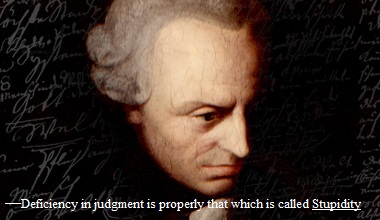
Good values make a good individual. Good individuals make a good family. Good families make a good community. Good communities make a good state. And Good states make a good nation. But to accomplish this, as discussed above, we need Awareness, Team ethic, and Bottom up solutions.
To institute good values, the clay itself must be suitably malleable. The aridity of stupidity must be rejected by identifying and curing its origins. Following that, the individual must then study dharma. Not the philosophical dharma, not the intellectual dharma (both of those are for advanced students), but the everyday dharma, the practical dharma . This is attained through the proper study, absorption, and most important, the practice of culture. Arts are merely the alankara (ornament) of culture, dharma is its true identity. Proper study of the stepping stones to dharma require learning (in some cases re-learning) sabhyata, saujanya, maryada, and achara. Having understood this, the individual is then prepared to be a valuable and contributing member of a team.
Family
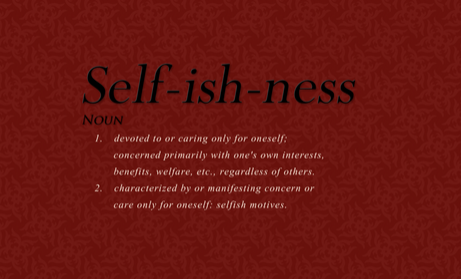
Families are the building blocks of society, which is in turn the building block of culture and civilization. Families raise good dharmic children. Individuals weaned on the welfare state and entitlement economy are selfish and servile, and in some cases, outright vile. Dharma ensures respect and self-respect. Therefore the key to establishing good teams and good families is through rejection of selfishness.

Community

Society must operate not on the basis of hermetically sealed communes, but with a sense of community and common purpose. Paths and panths may vary, kulacharas may differ, but dharma is for all. This is because dharma mandates that we think of society before ourselves. Community comes before korika (iccha or personal desire). Therefore, ambition must be rejected. This is the key to not only community, but also character.
State
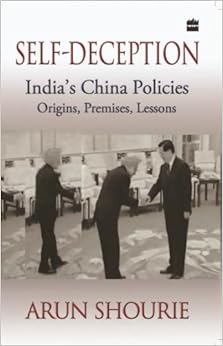
The governance of a state (rashtra) or country (desa) requires serious people. One must not only be selfless, and strategic, but also serious. This means not deceiving ourselves about the serious issues that face us, whether it is a newly bifurcated state, or a 65 year old republic, or a millennia old civilization.
It also means producing people of subtlety. One dimensional nationalism, lose the region. Excessive regionalism, lose the nation. Lose Dharma, lose everything. Too much centralisation is brittle. Once broken, the nation or civilization is gone. Too much regionalisation, however, and centrifugal forces result in states being easily divided and played off against each other like puppets. Therefore, we need bottom up solutions, but top-down strategy. Regional variations of civilizational ethos will build “Integral Unity“, which is more flexible and resilient.
Nation/Civilization
[Ram Raj was not built in a Day] but it was built upon tyaga and nishkama karma (selfless service). When individuals attempt to anoint themselves as Acharyas with no clue to their character, personal agendas come into question. Work cannot be done in the name of nationalism, but secretly to the benefit of special interests. Whether dynasty or durbar, individual families or communities cannot operate only in their own interests. All elements in the system must be respected to ensure a single-minded but decentralised dharma, in place of a putative papacy.
It must not seek to directly or indirectly abuse and revile our co-Dharmics, but bring them along not only as “labour”, but as stake-holders, decision-makers, and fellow Bharatiyas. Varna and Jati Dharmas may vary, but it is the principle and uniting sense of Saamaanya Dharma that must be the clarion call. What’s more, in response to the widespread targeting of certain castes, we cannot simply dismiss the very real mistakes that were committed by some sinners against dharma.
As the foremost intellectual kshatriya of the hour has spoke, “There can be no whitewashing here”. All jatis, and in particular our dalit jatis, must be welcomed in this joint-venture of reviving our culture and civilization. Indeed, whether caste itself may or may not disappear, one thing is clear, generational and systematic untouchability (and the terrible offenses against dharma committed by those who would misinterpret it) must be declared null and void.
Whether it is a matter of identifying original varnas or jatis on the basis of last names, etc, it is the height of idiocy to treat 200 million people as “untouchable”, especially when many (or even most) North Indian Dalits abstain from go-mamsa, and quite a few are outright vegetarian and are generally interested in Dharma. Out of curiosity, how many beef-eating, non-Indian (I’m being euphemistic here) marrying upper castes have similarly been “outcasted” and declared patitha? One cannot have one’s cake and eat it too—and untouchability not only by law, but also as a collective social rank must end forthwith! Dalits must be returned to dignity as fellow brothers and sisters in Dharma.
This is the foundation and framework, but what is the woodwork? What is the flesh and blood to the bone structure we have laid before you?
The heart of a culture, or its flesh and blood, is its arts. The soul of our Culture is Dharma, but, this atma is expressed in Language, Literature, Art, Architecture, Festivals, Cuisine, Music, Dance, and now Cinema. As such, cultural revival will necessitate not only studying our Classical Indic Literature or its schools of Art & Architecture, but in updating them so that they are relevant and appealing to the era. When fashions change within a mere decade, what then can be expected after millennia? As such, our approach must be to revive the principle and improvise it for current needs and tastes.
Many of you may now argue, “ok Nripathi, so what’s the problem? Seems straightforward. Let’s implement!” But not so fast. What is it exactly that we are implementing? It is easy to say let us teach good values—but how? It is easy to say let’s create good families—but how? It is easy to say revive a good nation—but how? Frequently in this materialistic world, in this kali yuga, it is not so much what we do, but how we do it. Frequently in this materialistic world it is is not so much what we say, but how we say it.
This must be done not in a pedantic or puerile or even primitive way. It must adapt to time, place, and manner. Stupidity may be the single biggest sickness afflicting Indic Society, but the single biggest obstacle is the gyaani.
The Gyaani Complex: Introduction to the Gyaani

Previously we discussed Rajarishi Janaka. The father of Sita was a man not only of astonishing self-control, and virtue, but also of compassion. Indeed, rather than ahankar driving him, it was those with ahankar who chose to test him–a self-realised man who remained on Earth out of compassion to teach those who had not yet attained self-realisation [1]. This shows that correct interpretation is necessary, based not on questionable translations or ahankar, but Acharyas—real Acharyas.
Similarly there is a story of Maharishi Yajnavalkya, who features prominently in the Upanisads, especially the Brihadaranyaka. Yajnavalkya had grown haughty with pride due to knowledge, and his guru forced him to vomit what had been taught. All the other jealous students therefore quickly turned into partridge birds (tittira) to eat up the knowledge that had been regurgitated, giving the name Taittiriya to the related Upanishad. Today, we have gyaanis (as distinguished from jnanis) and sarvagyaanis, who make false pretense to the truth while turning into little birds to consume vomit, etc, only to vomit it again without understanding what is relevant to the time, place, context. Aiming to be Yajnavalkya, each is a mere Tittira (a bird) seeking to specialise in simplified knowledge, but failing to understand its collective complexity. They quote logic and procedure, but are unable to apply it to their own arguments. This the danger of pompous fools who have knowledge, but not wisdom. Theory but no practice. A pound of practice, however, is worth a tonne of theory.
We must differentiate between adhyatmika and laukika vidya. After all, despite his brilliance and wisdom, would you have asked Sri Ramana Maharishi to be your general? We must also differentiate between vidya and buddhi (not to mention vidya and jnana). Simply because a person is well-read or learned in lore does not make him wise or self-realised. An illiterate can have wisdom from sheer anubhava (experience). Simply because one has memorised the Dharmashastras, does not make him a jnani. Vidya is lost at the end of every life. It is only jnana that makes an impression on the soul, and this comes from humility—in many cases, well-deserved. So do not be bowled over by clever talk and sophisticated phrases. Look for clear logic, not a mere exegesis of it. That is how you know not only whether the proposed action is wise or your path fruitful, but whether your guru is true…or false.
It also means adapting to changed circumstances. In an era where knowledge is power, not only do we need Sastra and Suhstra, but where necessary and justifiable, we must use Sastra AS Suhstra. When the adversary is breaking all the rules, you cannot be so foolishly hidebound and unrepentantly stupid as to continue to observe them to the most trivial letter. This is where maturity, and above all, judgment come from. After all, “Deficiency in judgment is is properly that which is called stupidity”.
Costs of the The Gyaani Complex
Readers may recall our earlier set of tweets on Lessons in Self-Improvement for Bharatiyas. Some may have wondered why we described our gyaanis as Ravana’s sons.
Like Ravanasura, grandson of Pulastya, they are wrapped up in pride about adhyatmic knowledge and lineage rather than asking if their conduct is worthy of the lineages they claim. What’s worse, these same thin-skinned, false preachers of truth take belongings (or ideas) from others and claim them as their own as though they were divinely inspired!—what cheek! As Ravana shamed the great and venerable Saptarishi Pulastya, so too do they shame their progenitors with their lack of character. They are unable to reflect upon their own behaviour and shameless thievery of the original work and property of others (Ravana stole Lanka from Kubera), when it is so obvious that they had neither the knowledge, nor wisdom, nor competence, nor ability to create it in the first place. But what truly haunts them, is they realize they never will…
In their quests to demonstrate their knowledge, they engage in petty one upsmanship, not realising the foolishness, and inability to tell right from wrong, that they have fallen into. Themselves mired in delusion, they label others as deluded. They pusillanimously claim the mantle of Dharma, only to pervert it to their own petty, self-serving ambition, even at the cost of the common societal good. They may come from any caste, but they are perennially obsessed with the idea of it. But this is of no surprise, for they don’t even have the capacity to properly define “dharma”—how then can they teach it let alone implement it and defend it?
It is logic and lesson (niti) that must be digested. Arguments cannot be “well Dharmashastra says this! This is the rule of Apasthamba!”. No other way of life has emphasised time and place more than Dharma. Indeed, it is not for nothing that there were not 1 but 4 separate Dharmasutras (Vasishta, Gautama, Baudhayana, and Apasthamba), each one updating the other and even rejecting whole rules outright or legalities outright as obsolete. Just as the Chhatrapati adopted Ganimi Kava (enemy tactics) as needed, so too must we be open to external ideas and approaches and altogether fresh fields of study. This doesn’t mean ejecting dharma, it means separating the ancillary (or non-essential) from the essential. Discretion.
What’s more, simply because one has read the Arthashastra does not make him or her a master of politics and war. Just as Vidya and Buddhi are different, so too are vidya and karma. It is for this reason Dharmic society traditionally had separate vocations for especially brahmanas and kshatriyas. This is because just as fundamental science is not the same as applied science, so too is vidya different from karma (action). Rajarishi Janaka represented a bridging of the two. In our era, this has become even more critical and standalone, hence the call for baudhik kshatriyas. This is not to disparage one varna or bloat the head of another, or even make the designation dependent on caste lines.
Paleo-purists may decry this as a violation of our astika principles—but these are also the same ahankaris who stood idly by during the criminal disrobing of Draupadi, citing law and rna (debt). They needlessly and endlessly pick fights with many countrymen in the face of a common enemy. Even more tragic, they need a team of supporters just to muster the manhood/womanhood to take on one honest questioner.
Indeed, because stupidity is deficiency in judgment, they might even sacrifice the national cause in the futile hope that they may upstage a superior rival—all in vain. Unable to propose and implement workable solutions—let alone imagine and conceive them—they serve as obstacles to those who do. But true leadership does otherwise, of which a gyaani is not capable. Not only does it show accountability, but vision and implementation as well. In contrast, these “mimic men” of another sort are truly incapable of an original idea, so they viciously and pettily attack anyone who upstages them. Like Ravana, they ride their chariot of ahankar to their doom and demise, taking their kin along with them.
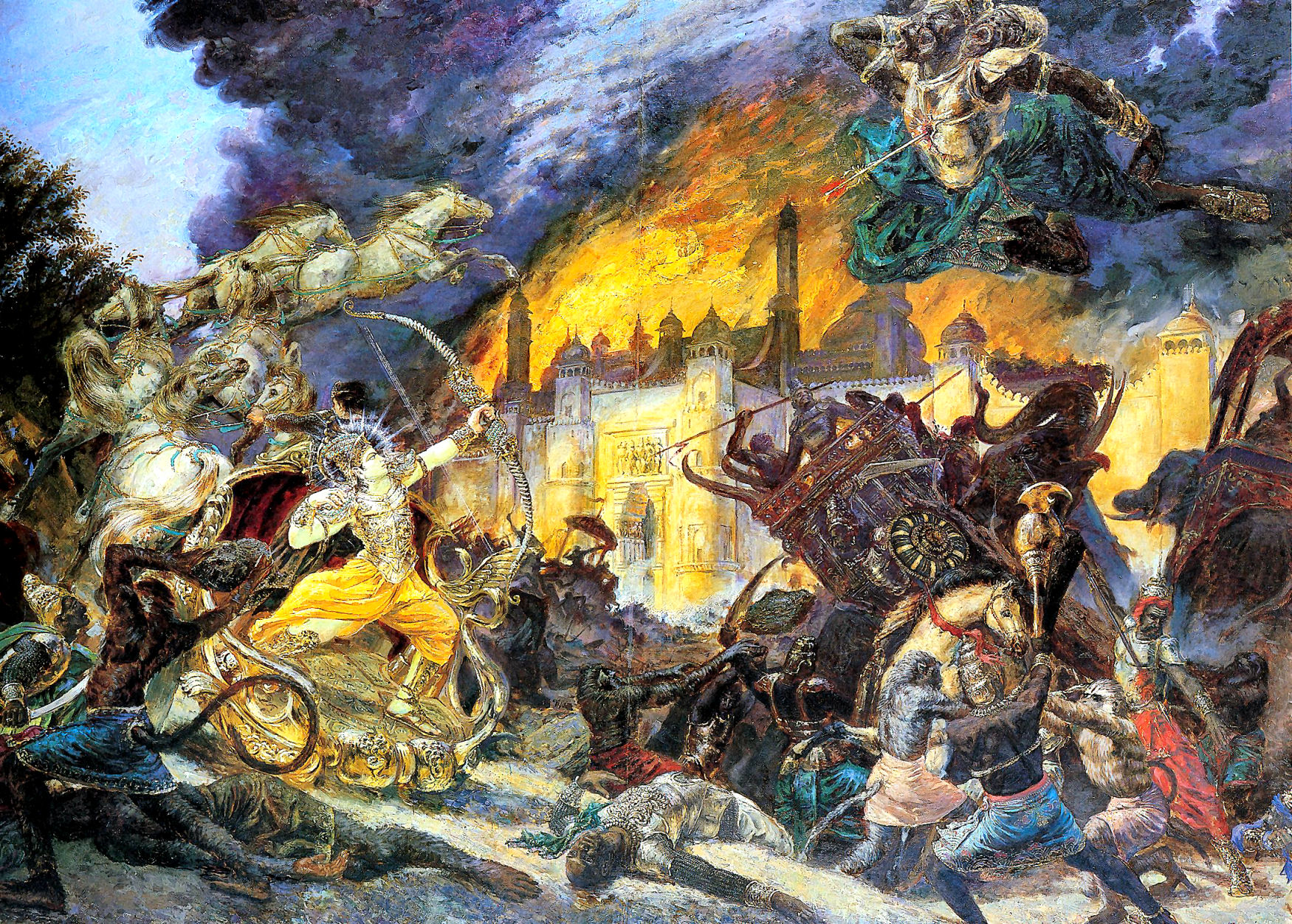
Therefore, our Individuals, of whatever caste, however accomplished and once well-meaning, must reject the Gyaani complex. If not, society must come together and punish them for being the errant school children that they are. It is incumbent upon Dharmic Brahmanas and Kshatriyas and other classes to speak up against such Adharmic behaviour, even if it comes from their own caste and kin. It also requires a new complement to the modern intellectual aristocrat. To assist the Baudhik Kshatriya, we need not the Brahma-Kshatriya, but rather, the Laukika Brahmana.
The Laukika Brahmana
Please note, while some circles may use the term disparagingly, this is in fact meant to be complimentary. This is because the Laukik Brahmin is not the ascetic and isolated adhyatmic brahmana or the ahankari gyaani, but is simultaneously spiritual and worldly wise. Indeed, the correct distinction for brahmanas in the material world is bhogi brahmana versus laukika brahmana. The Laukik Brahmin may or may not be born in the Brahmin varna or pursue its traditional vocations, but he embodies the ideals of it and the Sattva guna it represents. He does not merely pay lip service to Satya as a means to achieve his ambition (while appropriating the work of others), but actually dedicates himself to working with others to protect it. Because he checks his ego and rejects ambition, he can coolly advise the intellectual Kshatriya who requires fiery Rajas to complete his daunting task.
The true Laukika Brahmana may no longer pursue the old spiritual vocations, but he is not the adharmic brahmana who strays from the spiritual path due to ahankar and svaartha. As the Kali Age, The Age of Disorder, is such that non-traditional, though still dharmic, occupations are permitted so that he may supported himself, the character of the ancient Brahmanas still shines through him.
The time has come for hyperventilating hypocrites and greedy gyaanis to step aside. Baudhik Kshatriyas are the need of the hour, but the need of the day or decade will ultimately be Laukik Brahmanas.
Where will we find such men you ask? They are already among us. They do not make a great show of themselves and their alleged bhikshu bags, but quietly do their work without ego, knowing the work itself is its own reward. I know of one already. He has been a long time supporter, but he is too modest and selfless to allow himself to be named, as he is forever praising others while never seeking praise. Therefore, I will speak of another whom I do not know personally.
Shri Swaminathan Gurumurthy has been one of the most tireless voices speaking out for the good of society. While his tam-bram background serves as happy coincidence to this point, it only underscores the validity and need of such truly dharmic men. True, he does come from an orthodox family and holds many views that may seem conservative to us, but in his own way, he does not merely speak for harmonious good in society, but searches for pragmatic ways to achieve it. This is the tri-fold combination of adhyatmic, sastric, and pragmatic that we require.
 The laukik brahmin understands the expertise and even authority with which professionals speak and has the ingenuity to combine it with dharmic principles for appropriate dharmic responses. The laukik brahmana uses his vocation to combine his saastric knowledge with his modern knowledge of the same discipline, and advance civilizational knowledge and understanding. S. Gurumurthy is again illustrative here. Formally trained as a chartered accountant, he has an expert understanding of his field, and so, is in an exceedingly well-placed position study and reflect on ancient finance and economics in the arthasastra, vidura niti, and elsewhere. This practical understanding of needs can then identify the correct saastric principle or even determine if a new rule or text is required altogether. Thus he builds upon knowledge, rather than merely regurgitating it like the gyaani.
The laukik brahmin understands the expertise and even authority with which professionals speak and has the ingenuity to combine it with dharmic principles for appropriate dharmic responses. The laukik brahmana uses his vocation to combine his saastric knowledge with his modern knowledge of the same discipline, and advance civilizational knowledge and understanding. S. Gurumurthy is again illustrative here. Formally trained as a chartered accountant, he has an expert understanding of his field, and so, is in an exceedingly well-placed position study and reflect on ancient finance and economics in the arthasastra, vidura niti, and elsewhere. This practical understanding of needs can then identify the correct saastric principle or even determine if a new rule or text is required altogether. Thus he builds upon knowledge, rather than merely regurgitating it like the gyaani.
When culture itself has been commoditised, how can hidebound gyaanis be expected to provide good counsel? The blind fail to see the import of media shaping tastes. They think Art, Music, Poetry, Cinema etc. cannot or must not be harnessed as mediums to contest false adharmic ideas and reassert dharma. What else can be expected from one who is more concerned with position and privilege rather than principle?
The naivety and stubbornness of the gyaani leads to societal destruction. Neither able to lead the way nor willing to get out of the way, gyaanis stand as vignas to the protection and restoration of society even while chanting the sacred name Vigneswara.
That is the danger of rote-memorisation and blind application of sastras—they do not take into account the time, place, and context. Practices and even entire sastras which applied in one era, may have no place in another, because circumstances have changed. Some of the most unwitting assistants of evil are those who serially cry “adharma” at every response to adharmic attacks. This is the danger of casuistry—often the result of those who first discuss the structure of logic without applying it to their own thoughts or dialogues.
These same characters appeared when Sikhandi fought Bhishma, Yudhisthira uttered the one lie, and Arjuna fought Karna. Where were these alleged high-minded souls during the unjust killing of Abhimanyu or the attempted disrobing of Draupadi? Like Shalya, they develop a “conscience” only at the wrong place and wrong time, all while impotently whining at all other junctures.
When culture itself has become the new politics—can such unworldly whiners be expected to lead us, even spiritually? It is not working a 9-5 job in the modern word that makes us worldly, but being aware of the nature of the world and the designs of adharma and how it uses every tool at its disposal. The Laukika Brahmana is aware and chastises the clinical klibas who use casuistry to misguide the masses. He not only has adhyatmic learning but laukik discretion to not only know what to speak, and when to speak it, but also how to speak it.
In an era when medium is the message, unworldly naifs cannot be expected to show, nor can they be allowed to arrogate, leadership. This is because they have not studied leadership beyond the sastras. When organizations, laws, tactics, strategy, science, art, and even culture have become cataclysmically complex, adhyatmic knowledge must not only be balanced with saastric knowledge, but modern knowledge (desi or videsi) as well.
In Telugu, there is a saying Vajram nee vajram thoney koyyali. You can break a diamond only with another one. We Andhraites know something of this matter, after all, is that not how they split our Andhra?
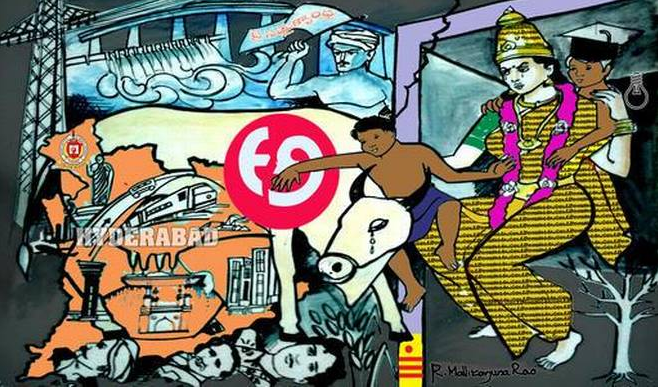
Recognising how even western economists are now starting to view “caste” (varna/jati) as social capital, Gurumurthy ji attacks stigma and prejudice instead, seeing past mistakes correctly as corruptions brought by hypocrites. Despite his orthoprax household, he speaks of the need for the Saamaanya Dharma, the common dharma—from which individual dharmas originate.
Above all, there is no cognitive dissonance for him between saastric principles and laukik realities. Recognising cookie cutter solutions are not possible, he links not the letter, but the spirit and principle to the correct time, place and manner. Instead of merely paying lip-service to purva paksa, he like Baudhik Kshatriya Shri Rajiv Malhotra, actually conducts it in a continuous and rigourous fashion. He knows his Bairoch as well as his Baudhayana, and his Huntington as well as his Hastamalakacarya. No individual can know the entire global canon (let alone the Indic), but he makes effort to do both, and has been for decades.
Laukika Brahmanas are not born, but made. They embody sattva, study sastra, and adapt to samaya (time). They do not espouse the view of fools crying “it is a kingdom of conscience or it is nothing!”, but understand that enemy tactics must be matched to protect and restore dharma. He or she recognises that knowledge and wisdom not only come from reciting shruti and studying smriti and sastra, but from sadhana/pure-hearted tapas, and most importantly, philosophising. Philosophy has been perverted today to mean any ideology from any rancid corner. Rather, Philosophy literally means “love of wisdom”. Thus the true philosopher (the term by which ancient visitors referred to our brahmanas), does serious original thinking. He thinks and reflects on what the actual problems of society are and how they are to be faced and solutions actualised.
The Baudhik Kshatriya is forever engaged either in conflict, preparing for it, or resting from it. While Rajiv ji has been tirelessly alerting our spiritual (adhyatmic) leaders, as he himself said, there is only so much one man (however talented) can do. As such, Laukik Brahmanas can be in constant contact with the Adhyatmic leaders, to only to gain spiritual knowledge but in turn apprise them of required material knowledge to guard against threats to our ancient parampara, and ultimately, to dharma sanatana. Laukik Brahmanas do not replace the direct contact society requires with these great Paramacharyas via their interaction and discourse, but rather, supplement and complement it.
They can survey the landscape (intellectual and spiritual) dispassionately, and do not have the burdens of training and tactics and taekwondo in modern dialectics. The true brahmana who is pure adhyatmic can pass on our vaidik and saastric tradition (unbroken and uncorrupted by the globalized material world) of which they, and only they, are the keepers. Meanwhile, the true brahmana who is laukik, alerts our true Paramacharyas of the insidious nature and designs of deceitful adharmis (desi and videsi). Duly surrounded and thrashed by these two spiritual powers, where then can the self-serving gyaani hypocrite or collaborator run?
That is the imperative of and the need for the prideless and pragmatic Laukika Brahmana.
The Road Ahead
https://youtu.be/9lKfgTuJc-0
Some post-mandal pithecanthropi have been circulating various memes aimed at disparaging Dalits in matters pertaining to reservation (itself a complex issue). What’s more, they claim that matters facing many poor Brahmins (particularly impoverished temple priests) are due failure to maintain unity. A united front to join the reservation wars is not the path salvation, but the path to destruction. It is not mandal-maddened vote-bank unity that will secure well-being for Brahmins, but Lok Kalyan.
“Lok kalyan?”, you ask? “Naïve”, you say?—but is it really? The entire purpose of the brahmana varna was precisely that–pursuing lok kalyan. While various Kings would periodically forget their duties, the disciplined spiritual life of brahmanas was meant to ensure an entire philosopher class that would not only teach good values, but embody them. That is what made the brahmana. Not “IQ“, not poseur pedantry, but character. The true brahmana was the embodiment of egolessness, because he knew or at least was aware of Brahman—the source and power of all things, including intellect and learning. The humility that this inspired spurred him on to good conduct and provided not political authority, but moral authority to counsel kings and minister to the masses. While the best poor old Plato could conceive was the Philosopher King (flip a coin on that one), and Aristotle, his rule of the aristos, Varnashrama Dharma was meant to secure sage advice to even the most stern or most sybaritic of kings. The Raja can punish a wrong-doing Brahmin, or even imprison a troublesome one or ten or a hundred, but to routinely ignore the counsel of the entire philosophical class would raise doubts in the country’s confidence in the king and erode his mass support. Wealth, power, and hedonism are all barred to the true Brahmana—that is the price for his moral authority.
Forever in analysis, the gyaani would otherwise be in paralysis were it not for the original thought of others which he shamelessly and dishonestly appropriates–and is no example to the public. As such, we need fewer gyaanis and far more Gurumurthy’s.
Our attitude must be that of Ekam Samaajam—One society. We may have many varnas, many panths (religions), many duties, but we are one society and civilization of people with a common purpose of state and national good, and a common saamaanya dharma. That attitude, more than anything else, is what is needed for a civilizational revival.
To conclude, we will end rather uncharacteristically, with a tale not from India, that is Bharat, but rather, that pragmatic civilization to the north, China, that is Zhongguo. It is the Parable of The Wheel and the Light:
“Emperor Liu Bang, in the third century B.C., became the first ruler to consolidate China into a unified empire [technically, it was Qin Shih Huangdi…but read on]. To celebrate his victory, Liu Bang held a great banquet in the palace, inviting many important government officials, military leaders, poets, and teachers, including Chen Cen, a master who had given him guidance during the campaign.
Chen Cen’s disciples, who accompanied him to the banquet, were impressed by the proceedings but were baffled by an enigma at the heart of the celebration.
Seated at the central table with Liu Bang was his illustrious high command. First there was Xiao He, an eminent general whose knowledge of military logistics was second to none. Next to him was Han Xin, a legendary tactician who’d won every battle he’d ever fought. Last was Chang Yang, a shrewd diplomat who was gifted at convincing heads of state to form alliances and surrender without fighting. These men the disciples could understand. What puzzled them was how Liu Bang, who didn’t have a noble birth or knowledge comparable to that of his chief advisors, fit into the picture.
“Why is he the emperor?” they asked. Chen Cen smiled and asked them: what determines the strength of a wheel?
“Is it not the sturdiness of the spokes?” one responded. “Then why is it that two wheels made of identical spokes differ in strength?” asked Chen Cen.
After a moment, he continued, “See beyond what is seen. Never forget that a wheel is made not only of spokes but also of the space between the spokes. Sturdy spokes poorly placed make a weak wheel. Whether their full potential is realized depends on the harmony between. The essence of wheel making lies in the craftman’s ability to conceive and create the space that holds and balances the spokes within the wheel. Think now, who is the craftsman here?”
The disciples were silent until one of them said, “But master, how does a craftsman secure the harmony between the spokes?”
Chen Cen asked them to think of sunlight.“The sun nurtures and vitalizes the trees and flowers,” he said. “It does so by giving away it’s light. But in the end, in which direction do they grow?” so it is with a master craftsman like Liu Bang. After placing individuals in positions that fully realize their potential, he secures harmony among them by giving them all credit for their distinctive achievements. And in the end, as the trees and flowers grow toward the giver, the sun, individuals grow toward Liu Bang with devotion.””

References:
- Radhakrishnan, Sarvepalli. The Principal Upanisads. London: Unwin Brothers. 1968
- Gurumurthy, Swaminathan. India’s Culture, Society, and Economy: Past, Present, and Future. http://lookintoculture.blogspot.com/
- gurumurthy.net
- Is Culture the New Politics? http://www.dnaindia.com/lifestyle/report-is-culture-the-new-politics-zee-jlf-panelists-debate-2055654
- http://www.theguardian.com/commentisfree/2013/jun/07/france-culture-war-united-states
- “What Determines the Strength of the Wheel”. http://thellabb.com/what-determines-the-strength-of-the-wheel/. Originally Published in Harvard Business Review .
- “Rajiv Malhotra’s Indra’s Net: Seven big ideas and Hinduism’s integral unity. “www.firstpost.com/living/rajiv-malhotras-indras-net-seven-big-ideas-and-hinduisms-integral-unity-2382902.html





![[Reprint Post] Culture: The Cure for Stupidity](https://indicportal.org/wp-content/uploads/2016/01/3085064-Wendell-Pierce-Quote-The-role-of-culture-is-that-it-s-the-form-150x150.jpg)

![[Reprint Post] Selfishness: The Real Root of All Evil](https://indicportal.org/wp-content/uploads/2015/09/selfishness1-150x150.png)